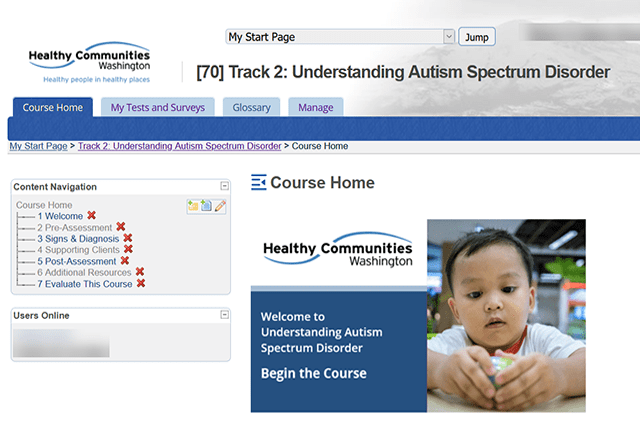One of the biggest challenges of remote learning and professional development is the directors’ or instructors’ ability to motivate learners and retain their attention.
After all, staff training comes on top of job responsibilities, which can feel forced and be met with resistance. Not to mention that some learners may feel intimidated by online learning in the first place.
So how do you foster a safe learning environment where participants feel comfortable and motivated?
How to Motivate Learners in A Professional Development Program
- Contact every learner at the start of class
- Cultivate a warm classroom
- Encourage community participation
- Use icebreakers and team-building techniques at the start of each module
- Offer live sessions and motivate learners to reach out
- Provide regular feedback
- Offer extra credit activities when possible
- Create peer groups and motivate learners to collaborate
- Identify low participating students
1. Contact Every Learner at the Start of Class
To motivate learners early on, send an email or a quick DM in the chat feature to establish a connection from the beginning.
This simple gesture shows participants that you’re eager to engage and invested in their success in the course.
2. Cultivate A Warm Classroom
Online communications can feel impersonal and make it hard to build rapport. But as the facilitator, you can still create a warm environment by being present and reachable.
Share your preferred contact method and let learners know how frequently you’re available should they need to reach you. An email, your office phone number, or a quick chat could work. Set office hours can also help them feel reassured.
Hybrid learning is here to stay. This e-course covers everything you need to know about how to prepare for a hybrid learning project, from earning buy-in to the must-have elements for successful virtual collaboration. Access it here.
3. Encourage Community Participation
While there’s certainly a time and a place for chitchat and water cooler exchanges, this type of casual interaction is priceless to motivate learners to participate. The thing is online communication doesn’t lend itself to casual exchange as easily.
You can try asking students to elect an “Inspirational Class Captain” who’ll post motivational quotes in each module. Or block time for open discussion at the end of the session to give participants time to engage and know each other.
4. Use Icebreakers and Team-building Techniques at the Start of Each Module
If communication is feeling a little forced, break the ice with some exercises so everyone loosens up before diving into course materials.
One secret key to motivating learners is that they need to feel like they belong. Some team-building games feel cheesy. But using them will help remind everyone that they’re a team and the course will be much smoother if they collaborate. Who knows? Maybe they’ll even have fun.
5. Offer Live Sessions and Motivate Learners to Reach Out
Plan a weekly office-hours schedule. This will offer learners the opportunity to speak with you about any concerns and motivate them to show up regularly.
Offering these is a great way to motivate students to ask questions they need immediate answers to and to engage with you when they otherwise might not have.
6. Provide Regular Feedback
If you’ve ever had a job where your higher-up could go months at a time without telling you how your projects were going, you’ll understand how frustrating it can be to try and find hints about your performance.
Feedback, both positive and negative, can be uncomfortable. But providing it regularly can improve outcomes for the learners and motivate them to stay engaged. In fact, the same applies to employees.
7. Offer Extra Credit Activities When Possible
If students aren’t participating in the course for grades, use short quizzes as games that add a layer of fun to the module and help to motivate the learners. It may sound odd, but quizzes and other activities can bring out their competitiveness and help time pass quickly.
8. Create Peer Groups and Motivate Learners to Collaborate
Another way to motivate learners in professional development is by encouraging collaboration. You can do this by assigning team projects or peer partnerships.
You can create a private collaboration space with the Groups tool. Or let them organize their time and resources through video conference calls or other means.
9. Identify Low Participating Students
Finally, you want to monitor your learners’ participation and respond to their posts to show that you’re paying attention.
If someone goes MIA, call and/or email them after class. This shows that you’re concerned about their presence in the classroom and can offer support to help them succeed.
Understanding the Unique Traits of Adult Learners Motivates Learners to Participate in Professional Development
Adults in professional development programs face a host of challenges entirely different from kids or college students. Addressing these unique challenges strategically can motivate learners and help them push through and finish a successful course.
If you’re considering online training, working with an expert to set up your program will increase your chances of success. At Talance, we’ve worked with health organizations of all sizes to achieve their training goals. Book a consultation now to speak with our experts.



